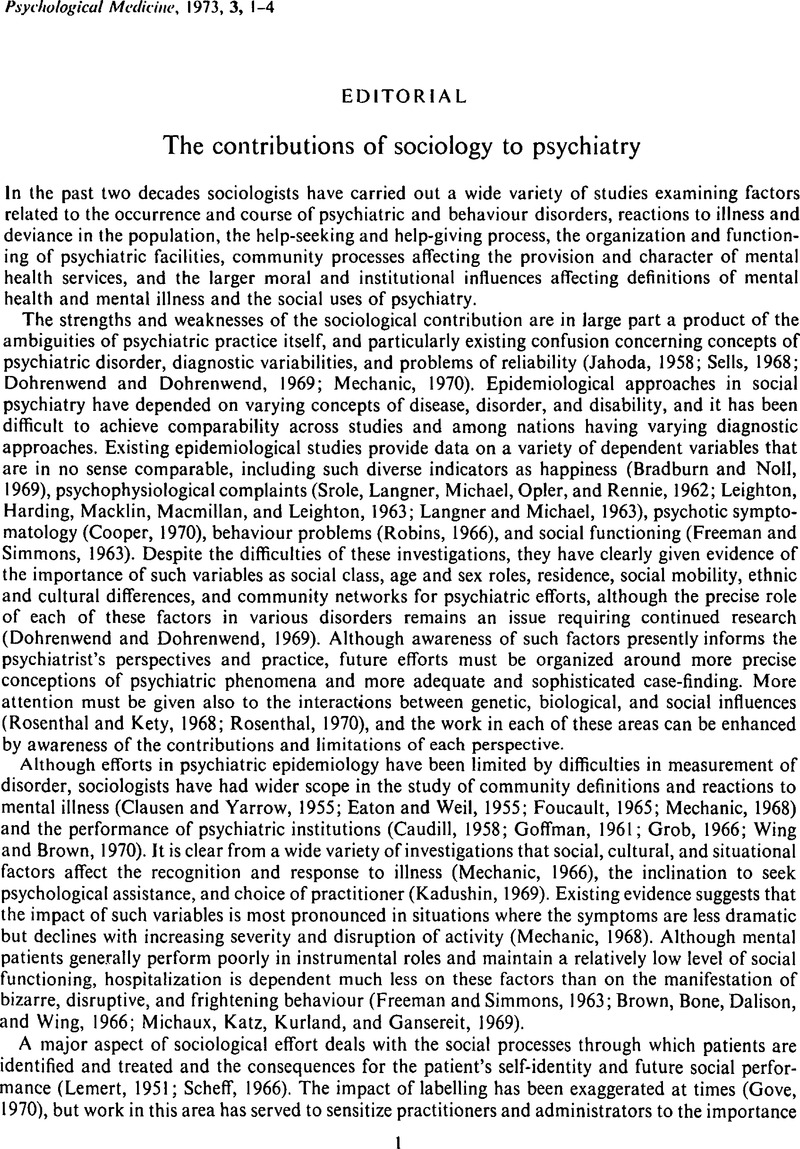Crossref Citations
This article has been cited by the following publications. This list is generated based on data provided by Crossref.
Hossenlopp, Claire M.
and
Holland, Jimmie
1978.
Ambulatory Patients with Medical and Psychiatric Illness: Care in a Special Medical Clinic.
The International Journal of Psychiatry in Medicine,
Vol. 8,
Issue. 1,
p.
1.
Mason, Stephen T.
and
Fibiger, Hans C.
1979.
The dorsal noradrenergic bundle and varieties of passive avoidance.
Psychopharmacology,
Vol. 66,
Issue. 2,
p.
179.
Giggs, John A.
1980.
Environmental Medicine.
p.
281.
Cooper, Brian
1994.
Sociology in the context of social psychiatry.
Acta Psychiatrica Scandinavica,
Vol. 90,
Issue. s385,
p.
39.



